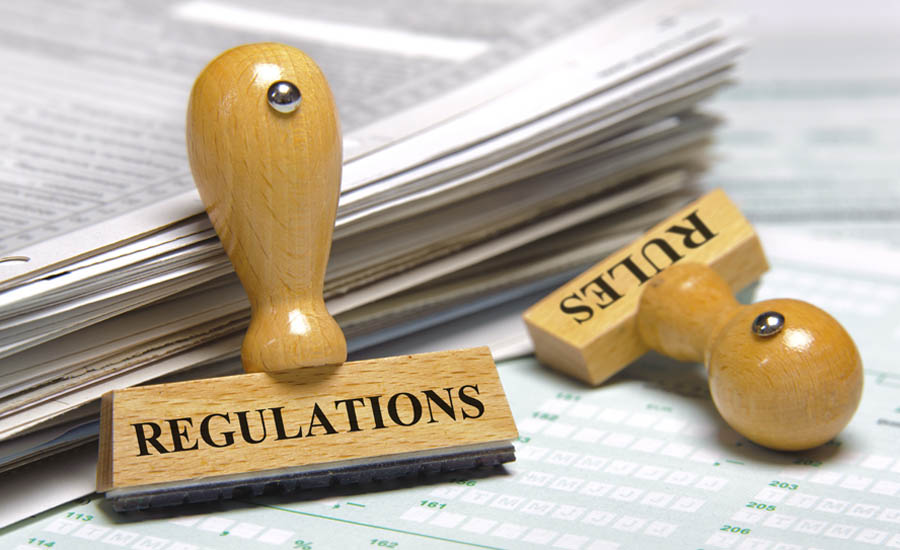EPA finalizes rule to modernize clean water act reporting

The U.S. Environmental Protection Agency (EPA) has finalized a rule to modernize Clean Water Act reporting for municipalities, industries, and other facilities. The final rule will require regulated entities and state and federal regulators to use existing, available information technology to electronically report data required by the National Pollutant Discharge Elimination System (NPDES) program instead of filing written paper reports.
EPA estimates that, once the rule is fully implemented, the 46 states and the Virgin Islands Territory that are authorized to administer the NPDES program will collectively save approximately $22.6 million each year as a result of switching from paper to electronic reporting. The final rule will make facility-specific information, such as inspection and enforcement history, pollutant monitoring results, and other data required by NPDES permits accessible to the public through EPA’s website.
“Electronic reporting will give the public full transparency into water pollution sources, save millions of dollars, and lead to better water quality in American communities,” said Cynthia Giles, assistant administrator for EPA’s Office of Enforcement and Compliance Assurance. “This rule will significantly reduce the burden and costs of paperwork, freeing up limited resources for states and other regulatory authorities to focus on the most serious water quality problems. After more than two years of working closely with states and a range of stakeholders, today we take a critical step to bring clean water protection into the modern age.”
“ECOS is pleased to see a rule move ahead that modernizes how businesses, states, and the federal government interface and share information in the clean water program,” said Alexandra Dapolito Dunn, Executive Director and General Counsel of the Environmental Council of the States. “Our focus going forward with EPA and the impacted regulated community will be on smooth implementation of this rule, and on developing flexible approaches when needed.”
The Clean Water Act requires that municipal, industrial or commercial facilities that discharge wastewater directly into waters of the United States obtain a permit. The NPDES program requires that permitted facilities monitor and report data on pollutant discharges and take other actions to ensure discharges do not affect human health or the environment. Currently, some facilities subject to these reporting requirements submit data in paper form to states and other regulatory authorities, where the information must be manually entered into data systems. Through the e-reporting rule, these facilities will electronically report data directly to the appropriate regulatory authority.
EPA proposed the e-reporting rule in July of 2013 with a public comment period. Since then, EPA has held over more than 70 technical and individual meetings with states to review the electronic reporting provisions and to identify any issues requiring resolution. In addition, EPA held over 50 webinars and meetings with over 1,200 stakeholders to discuss the rulemaking. EPA will continue collaborating with states as they enhance their electronic reporting capabilities to support the rule’s implementation. Over the next few months, EPA will schedule trainings and outreach webinar sessions for states and regulated entities to provide an overview of the final rule, and the next steps for implementing electronic reporting.
In response to state feedback, the final rule provides authorized NPDES programs with more flexibility for implementation, providing more time for the transition from paper to electronic reporting and more flexibility in how they can grant electronic reporting waivers to facilities. Most facilities subject to effluent monitoring reporting requirements will be required to start submitting data electronically one year following the effective date of the final rule. A second phase will incorporate electronic reporting for other Clean Water Act reports such as performance status reports for municipal urban stormwater programs, controls on industrial discharges to local sewage treatment plants, and sewer overflows. Also in response to comments and suggestions from states, EPA is providing states with more time to electronically collect, manage, and share this data – up to five years instead of two years as initially proposed.
This rulemaking is part of EPA’s Next Generation Compliance strategy, as well as the E-Enterprise for the Environment strategy with states and tribes, to take advantage of new tools and innovative approaches to increase compliance and reduce pollution. The shift toward electronic reporting in the NPDES program and others will help make environmental reporting more accurate, complete, and efficient. It will also help EPA and co-regulators better manage information, and improve effectiveness and transparency.
EPA expects to publish the final rule in the Federal Register in October, 2015. The final rule will be effective 60 days following this publication.
View the final rule at:
http://www2.epa.gov/compliance/final-national-pollutant-discharge-elimination-system-npdes-electronic-reporting-rule
More information on Next Generation Compliance:
http://www2.epa.gov/compliance/next-generation-compliance
Looking for a reprint of this article?
From high-res PDFs to custom plaques, order your copy today!






.jpg?t=1721257160)
